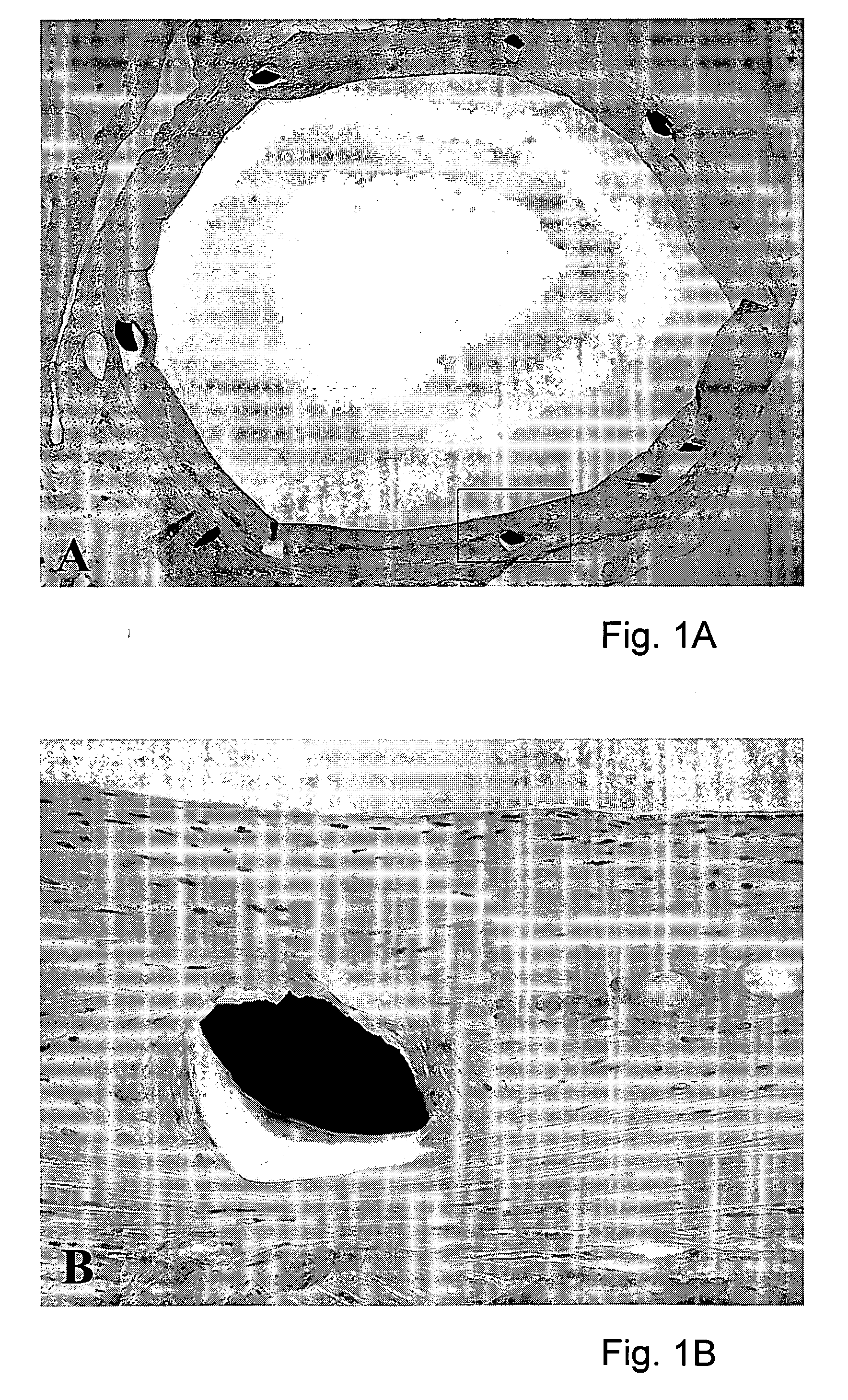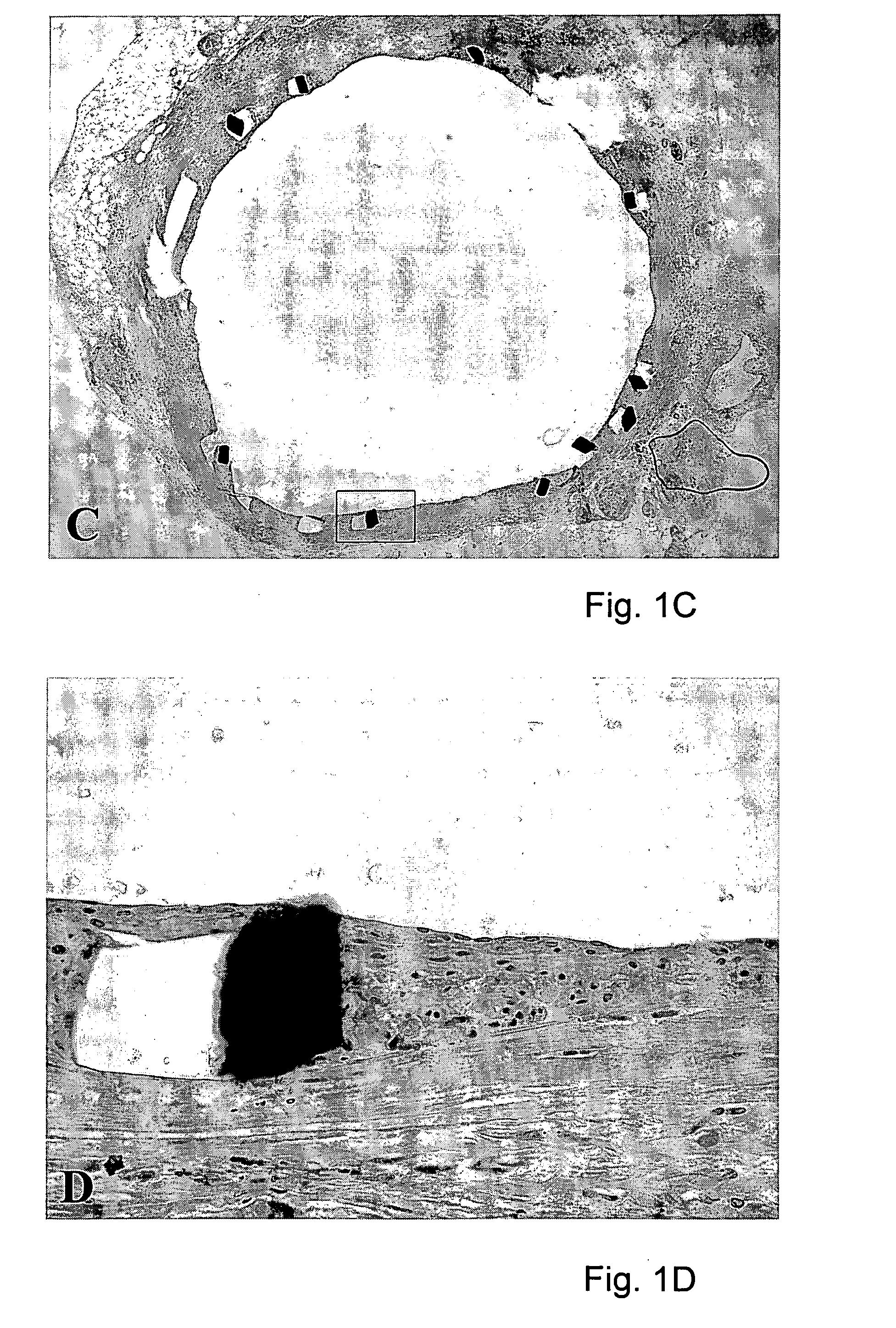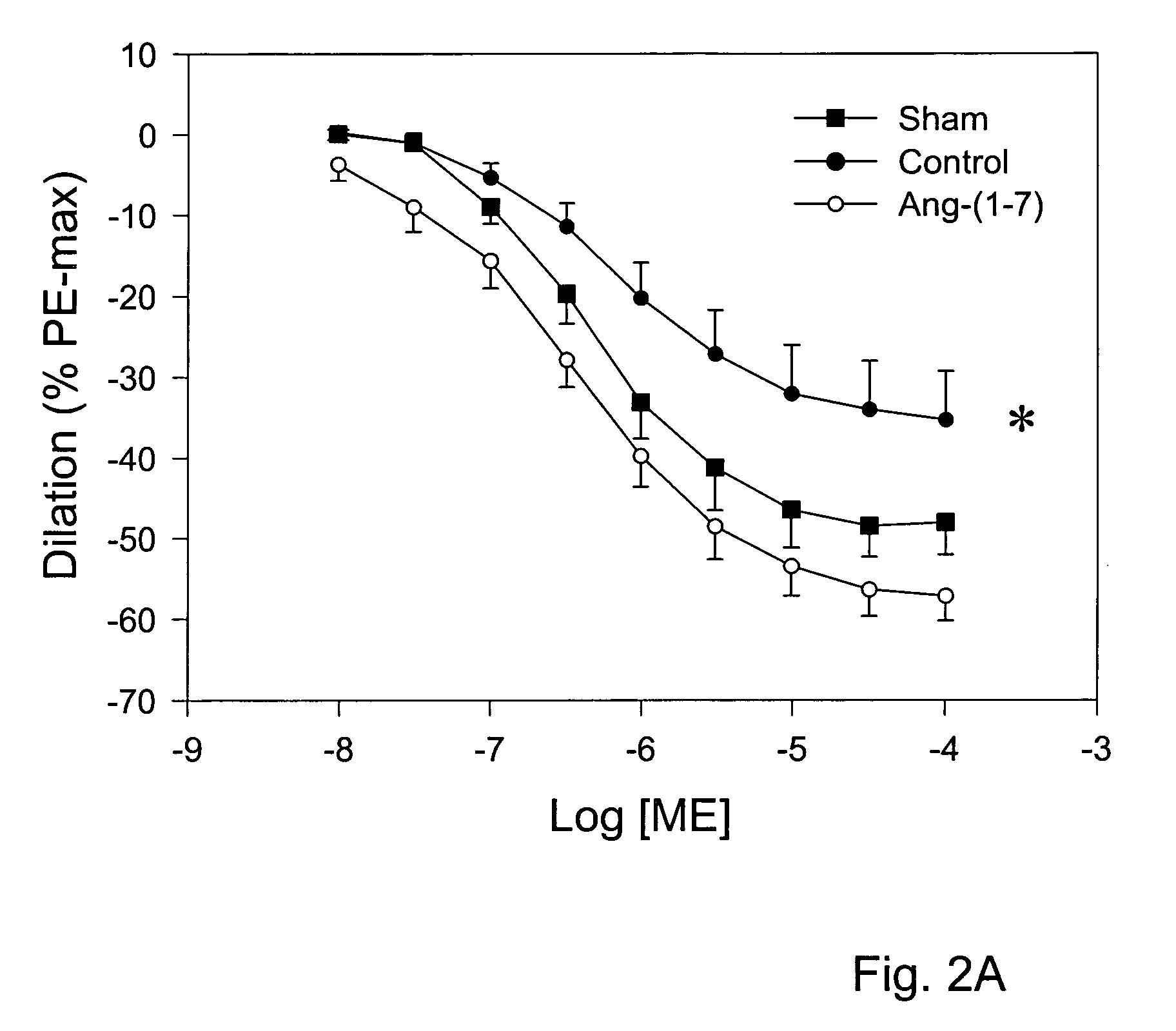Use of angiotensin-(1-7) for preventing and/or reducing the formation of neointima
- Summary
- Abstract
- Description
- Claims
- Application Information
AI Technical Summary
Benefits of technology
Problems solved by technology
Method used
Image
Examples
examples
Animal Protocol
[0040] Twenty-eight male Wistar rats (Harlan, Horst, Netherlands) weighing 450 to 520 grams were anesthetized with O2, N2O and isofluorane (Abbot B.V., Hoofddorp, Netherlands). A pre-mounted 2.5×9 mm BeStent™ 2 (Medtronic-Bakken Research, Maastricht, the Netherlands) was implanted in the abdominal aorta as previously described, or a sham operation was performed.35 Subsequently, an osmotic minipump with a pumping rate of 0.25 μl / hour, lasting for 28 days (Model 2004, Alzet, Charles River Nederland, Maastricht, Netherlands), was implanted subcutaneously for drug delivery via a catheter in the jugular vein. Stented rats received angiotensin-(1-7) (Bachem, Weil am Rhein, Germany) (24 μg / kg / hour) (n=7) or saline (0.25 μl / hour) (n=10). Sham-operated rats received saline infusion (n=6). With this method, Ang-(1-7) plasma levels of approximately 917.8±194.1 pmol / l are reached. At this concentration, Ang-(1-7) binds to the Mas receptor and has subsequent functional effects. ...
PUM
| Property | Measurement | Unit |
|---|---|---|
| Tension | aaaaa | aaaaa |
Abstract
Description
Claims
Application Information
 Login to View More
Login to View More - R&D
- Intellectual Property
- Life Sciences
- Materials
- Tech Scout
- Unparalleled Data Quality
- Higher Quality Content
- 60% Fewer Hallucinations
Browse by: Latest US Patents, China's latest patents, Technical Efficacy Thesaurus, Application Domain, Technology Topic, Popular Technical Reports.
© 2025 PatSnap. All rights reserved.Legal|Privacy policy|Modern Slavery Act Transparency Statement|Sitemap|About US| Contact US: help@patsnap.com



